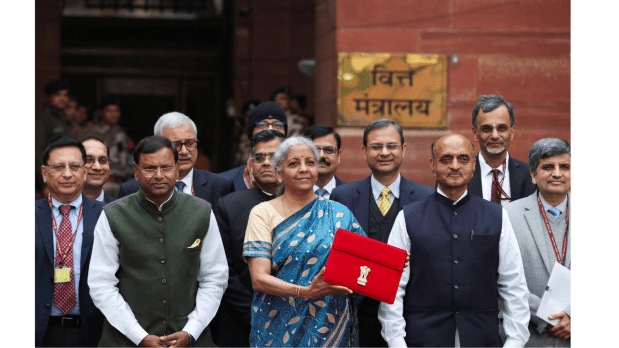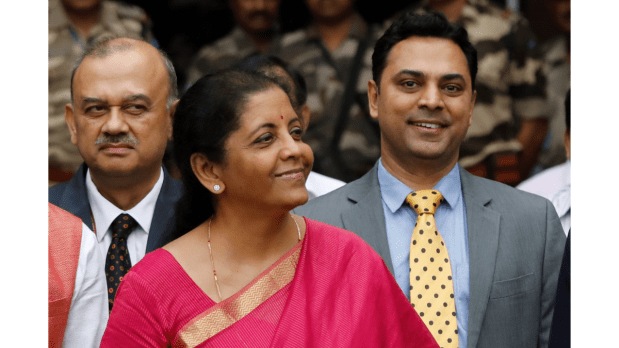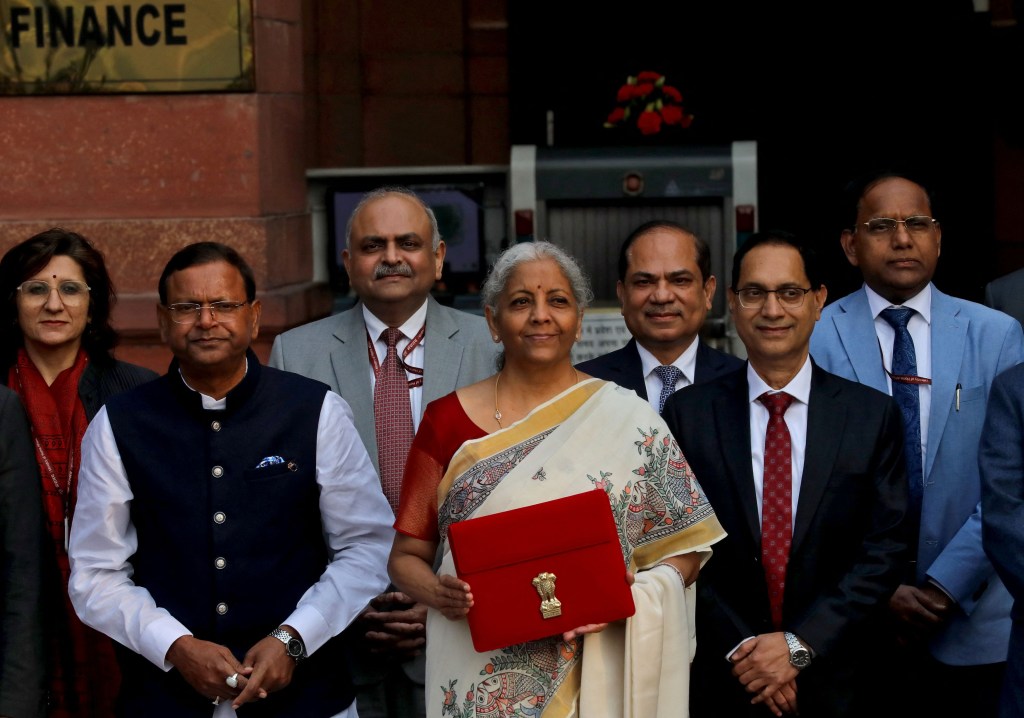As Finance Minister Nirmala Sitharaman prepares to present the Union Budget for the eighth consecutive time, her record-breaking tenure is drawing attention. Being the second woman after Former Prime Minister Indira Gandhi to present the budget, her choice of attire and the irrevocable meaning it shares with the budget cannot be overlooked. To present the Union Budget 2025, Sitharaman is seen wearing a white saree with Madhubani artwork and Golden borders. From what is understood, this piece of clothing was gifted to her by Padma Shri awardee Dulari Devi, whom the finance minister met during her visit to the Mithila Art Institute in Bihar for a credit outreach programme. According to media reports, Devi had specifically requested Sitharaman to wear the saree on Budget Day.
Who is Dulari Devi?
Dulari Devi truly lives up to her name, being celebrated as the beloved of Madhubani art, a traditional style originating from Bihar. Born into a fishing community, she discovered her passion for the art form while working for her employer, Karpoori Devi. Despite facing numerous personal hardships, she persevered, mastering the craft and earning national recognition, including the prestigious Padma Shri award.
Beyond her artistic achievements, Dulari Devi is a dedicated advocate for social issues such as child marriage, AIDS awareness, and female foeticide. She is also a passionate teacher, having trained over 1,000 students through institutions like the Mithila Art Institute and Seva Mithila Sansthan, ensuring that the rich legacy of Madhubani art continues to flourish.

Nirmala Sitharaman’s sarees over the years
Finance Minister Nirmala Sitharaman’s saree choices on Budget Day have often reflected India’s diverse handloom traditions, with each selection carrying cultural and regional significance. In 2024, she wore an off-white Mangalagiri saree with a magenta border, a weave from Andhra Pradesh’s Guntur district known for its clean design and elegant simplicity. According to media reports, this choice coincided with the budget’s emphasis on Andhra Pradesh, including funding for the Polavaram irrigation project aimed at strengthening the agricultural sector. The previous year, in 2023, she opted for a red silk saree with a black-and-gold temple border, a design deeply rooted in South Indian traditions. The bold red hue symbolised energy and determination, while the temple motifs, including chariots and peacocks, reflected stability and cultural heritage.

Her selections in earlier years also showcased India’s rich textile heritage. In 2022, she wore a deep brown Bomkai saree from Odisha, featuring intricate silver zari work inspired by local folklore and nature, underlining the government’s focus on supporting artisans. The 2021 budget saw her in a vibrant Pochampally ikat saree from Telangana, blending red, off-white, and green in traditional geometric patterns, reflecting resilience amid economic recovery efforts. In 2020, she chose a bright yellow silk saree with a blue border, signifying optimism and stability during the pandemic. Her first budget presentation in 2019 featured a pink Mangalagiri saree with a gold border, marking a shift in approach as she also introduced the “bahi-khata” ledger in place of the conventional budget briefcase.
What does today’s saree signify?
Sitharaman’s preference for handloom sarees from various Indian states is well known, but her latest choice has sparked curiosity, particularly with Bihar’s elections approaching later this year. Could this be a subtle indication that Bihar might receive special attention in the upcoming budget? Speculation is growing that the government may unveil significant projects for Bihar, potentially focusing on infrastructure development, job creation, and economic growth initiatives. If such announcements are made, they could play a crucial role in shaping the political and economic landscape of the state ahead of the elections.

